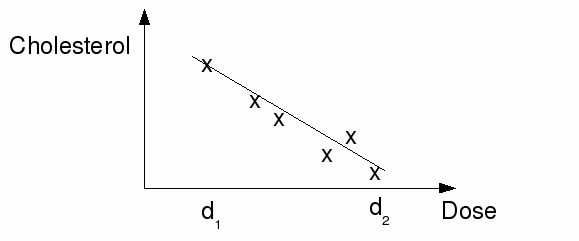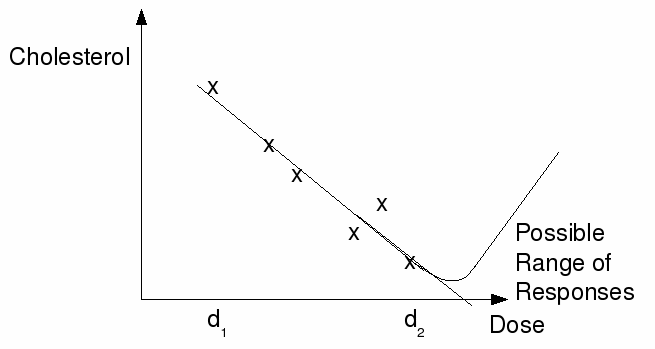Extrapolationis a bad idea. It involves using a set of data to make predictionsfor data outside the range used to construct a statistical model.Suppose for example that a drug is being tested. The drug is designedto lower cholesterol. The drug is tested on healthy people first tominimise the risks of damage to health, and at first the dose will berestricted. A graph is drawn of cholesterol against dose.

Thegraph may be used to estimate cholesterol level levels for dosesbetween d-1 and d-2 but not outside this range. Doses outside therange may have unpredictable consequences, either reducing thecholesterol BELOW a safe level, or possibly even raising cholesterolby causing damage to the mechanism which raises cholesterol.

Predictions of future values may be extrapolate frompast experience in the same way. For instance, when things are good,people imagine things will get better. They look at their increasingincome for the past few years and imagine themselves on the escalatorto prosperity. If income increased 5% each year for the past 5 years,they may think it will increase by 5% next year. In fact income issubject to the business cycle. Income goes up every year for severalyears and then down for a couple.
Don't extrapolate if you can avoid it. If you can'tavoid it, leave a large margin for error. And bear in mind that thefurther you extrapolate outside the range of data for which you havea model, the larger the errors you may find yourself making.
